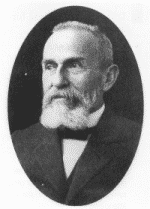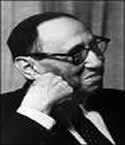History of Autism
Autism is not something new, infact one of the first recorded reference was by that of Jean-Marc-Gaspard Itard French Physician born in Provence (1775-1838) with particular reference to Victor, the so-called “Wild Boy of Avalon.” who showed several signs of autism and is thought to have lived his entire childhood alone in the woods near Saint-Sernin-sur-Rance, France in 1797. Itard treated him with a behavioral program designed to help him form social attachments and to induce speech via imitation.
Victor’s life was dramatized in François Truffaut’s 1970 film l’Enfant Sauvage.
Victor the wild boy of Aveyron died in Paris in 1828. French version of Itard’s study of Victor are found here Mémoire et Rapport sur Victor de l’Aveyron au format PDF (Adobe Acrobat Reader) à téléchargerThe English translation version Mémoir on Victor de l’Aveyronfor this link also includes more information on feral children which I find to be an extemely interesting subject, In particular the more recent story of ‘ The Wild Boy of Burundi’ which I see as more of a social outcast story than that of a feral child, coupled with the fact the fact he was also severly autistic.
The story itself can be read in the following book The Wild Boy of Burundi: The Story of an Outcast Child, written by Harlan Lane and Richard Pillard, Published by Random House, 1978. 188 Pages. ISBN 9780394412528.
It was Itard who was also credited with describing the first case of Tourette Syndrome in Marquise de Dampierre, a french woman of nobility.
Paul Eugen Bleuler born April 30, 1857 this Swiss psychiatrist thought to be responsible for the first use of the term autism in 1910 as he was defining symptoms of schizophrenia He derived it from the Greek word autos (αὐτός, meaning self), Bleuler is also recognized today for having a different neurological disorder called Synesthesia, in which the main senses of the human mind (touch, taste, smell, sight, hear, pain, color, graphemes, etc.) are ‘mixed up’. Bleuler died in Zurich on July 15, 1939.
The word autism first took its modern sense in 1938 when Hans Asperger of the Vienna University Hospital adopted Bleuler’s terminology “autistic psychopaths” in a lecture in German about child psychology. Asperger was investigating a form of ASD now known as Asperger syndrome, though for various reasons it was not widely recognized as a separate diagnosis until 1981.
Hans Asperger (February 18, 1906-October 21, 1980) was the Austrian pediatrician after whom Asperger’s Syndrome is named.Born in Vienna, Asperger published the first definition of Asperger’s Syndrome in 1944. In four boys, he identified a pattern of behavior and abilities that he called “autistic psychopathy,” meaning autism – self and psychopathy – personality. The pattern included “a lack of empathy, little ability to form friendships, one-sided conversation, intense absorption in a special interest and clumsy movements.” Asperger called children with AS “little professors,” because of their ability to talk about their favorite subject in great detail.He was convinced that many would use their special talents in adulthood. He followed one child, Fritz V into adulthood. V became a professor of astronomy and solved an error in Newton’s work he originally noticed as a child. Hans Asperger’s positive outlook contrasts strikingly with Leo Kanner’s description of autism. Both men essentially described the same condition. It may be that Hans Asperger expressed positive views on Asperger Syndrome due to the political climate of the time, in particular the Nazis’ intolerance for disabilities. Since Hans Asperger’s time, it has become clear that the condition does not normally entail high intelligence and academic success.
Ironically, as a child Hans Asperger appears to have exhibited features of the very condition named after him. He was described as a remote and lonely child, who had difficulty making friends. He was talented in language, in particular he was interested in the German poet Franz Grillparzer whose poetry he would frequent quote to his uninterested classmates.Asperger died before his identification of this pattern of behaviour became widely recognized because his work was mostly in German and little-translated. The first person to use the term “Asperger’s Syndrome” in a paper was British researcher Lorna Wing. Her paper, Asperger’s syndrome: a clinical account, was published in 1981 and challenged the previously accepted model of autism presented by Leo Kanner in 1943.
Further reading
Uta Frith (ed.): Autism and Asperger Syndrome (Cambridge University Press, 1991; ISBN 052138608X) — in which Asperger’s 1944 paper is translated and annotated
Papers
Asperger, H. (1944), Die ‘Autistischen Psychopathen’ im Kindesalter, Archiv fur Psychiatrie und Nervenkrankheiten, 117, pp.76-136.
Asperger, H. (1968), Zur Differentialdiagnose des Kindlichen Autismus, Acta paedopsychiatrica, 35, pp.136-145.
Asperger, H. (1979), Problems of Infantile Autism, Communication, 13, pp.45-52
Leo Kanner of the Johns Hopkins Hospital first used autism in its modern sense in English when he introduced the label early infantile autism in a 1943 report of 11 children with striking behavioral similarities. Almost all the characteristics described in Kanner’s first paper on the subject, notably “autistic aloneness” and “insistence on sameness”, are still regarded as typical of the autistic spectrum of disorders. It is not known whether Kanner derived the term independently of Asperger.
Leo Kanner MD (June 13 1894 – April 4 1981) was born in Klekotow, Austria. He studied at the University of Berlin from 1913, his studies broken by service with the Austrian Army in World War I, finally receiving his MD in 1921. He emigrated to the United States in 1924 to take up a position as Assistant Physician at the State Hospital in Yankton County, South Dakota. In 1930 he was selected to develop the first child psychiatry service in a pediatric hospital at Johns Hopkins Hospital, Baltimore. He became Associate Professor of Psychiatry in 1933.He was the first physician in the United States to be identified as a child psychiatrist and his first textbook, Child Psychiatry in 1935, was the first English language textbook to focus on the psychiatric problems of children. His seminal 1943 paper Autistic Disturbances of Affective Contact, together with the work of Hans Asperger, forms the basis of the modern study of autism.He became Director of Child Psychiatry in 1957. He retired in 1959 but remained active until his death aged 87.
Kanner’s reuse of autism led to decades of confused terminology like “infantile schizophrenia”, and child psychiatry’s focus on maternal deprivation during the mid-1900s led to misconceptions of autism as an infant’s response to “refrigerator mothers” a term used by Kanner in a 1960 interview, Kanner bluntly described parents of autistic children as “just happening to defrost enough to produce a child.” Later Bruno Bettelheim, a University of Chicago professor and child development specialist, and other leading psychoanalysts also championed the notion that autism was the product of mothers who were cold, distant and rejecting, thus deprived of the chance to “bond properly”. The theory was embraced by the medical establishment and went largely unchallenged into the mid-1960s, but its effects have lingered into the 21st century.
Papers
Kanner, L. (1943), Autistic Disturbances of Affective Contact, Nervous Child, 2, pp.217-250.
Kanner, L. (1946), Irrelevant and Metaphorical Language in Early Infantile Autism, American Journal of Psychiatry, 103, pp.242-246.
Kanner, L. & Eisenberg, L. (1956), Early Infantile Autism 1943-1955, American Journal of Orthopsychiatry, 26, pp.55-65.
Bender, L. (1982), In Memoriam Leo Kanner, MD June 13, 1894–April 4, 1981, J Am Acad Child Psychiatry 21(1): 88-89.
Books
Child Psychiatry (1935)
Childhood Psychosis: Initial Studies and New Insights (1973)






